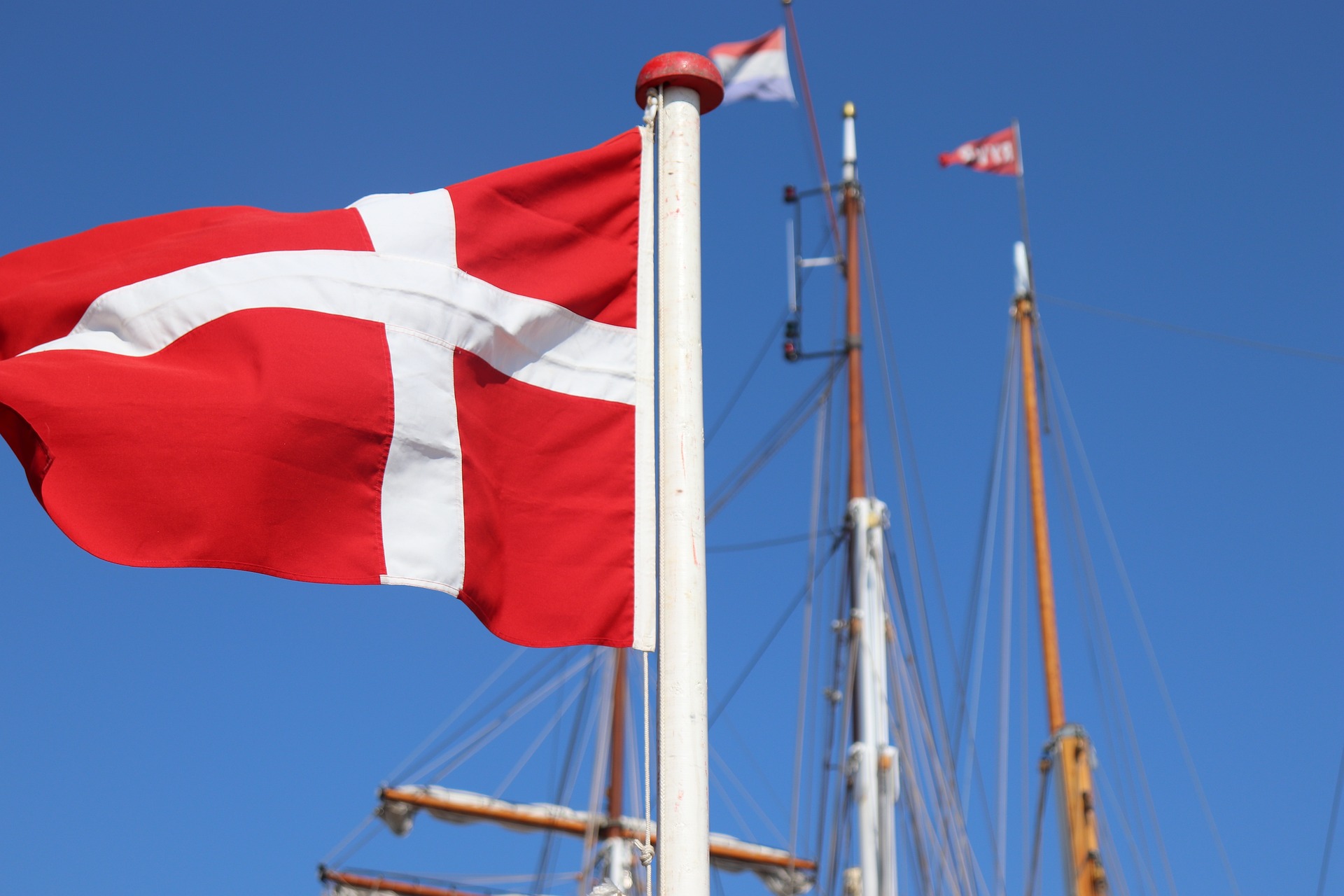
Nie można przecenić znaczenia wielojęzycznych stron internetowych. Ponieważ globalny rynek rozszerza się wykładniczo, zarówno firmy, jak i osoby fizyczne uznają ogromne korzyści płynące z docierania do publiczności w swoich językach ojczystych.
Jednym z języków, który ma znaczące znaczenie w kontekście tworzenia wielojęzycznych stron internetowych, jest duński.
Wprowadzenie do wielojęzycznych stron internetowych i tłumaczenia na duńskie
Duński, północno -germański język, jest używany przez około 6 milionów ludzi na całym świecie. Choć głównie stosowany w Danii, ma również oficjalny status na Wyspach Faroe i Grenlandii, co czyni go kluczowym językiem dla osób, które chcą nawiązać kontakt z publicznością w tych regionach.
Język duński szczyci się bogatą historią, pochodzącą z epoki Wikingów. Przez wieki przekształcił się w odrębną byt językowy, charakteryzujący się unikalną fonologią, słownictwem i gramatyką. Podczas gdy Danish może stanowić pewne wyzwania dla osób nierodzinnych ze względu na złożone dźwięki samogłosek i morfologię fleksyjną, jego stosunkowo prosta składnia i gramatyka sprawiają, że jest to dostępny język do nauki.
Dla firm i osób, które chcą skorzystać z duńskojęzycznego rynku, niezbędna jest zlokalizowana strona internetowa w duństwie. Nie tylko pokazuje zaangażowanie w obsługę duńskojęzycznych odbiorców, ale także zwiększa doświadczenie użytkownika i wspiera zaufanie i wiarygodność.
Ponadto, wraz ze wzrostem rozpowszechnienia duńskiej treści w Internecie, posiadanie duńskiej wersji Twojej witryny może znacznie rozszerzyć zasięg online. Niezależnie od tego, czy jesteś międzynarodową korporacją, czy małą firmą, która chce się rozwijać na arenie międzynarodowej, przekładając witrynę WordPress na duńską, otwiera świat możliwości rozwoju i sukcesu.
W tym artykule omówiono proces tłumaczenia witryny WordPress na język duński, podkreślając korzyści i wyzwania po drodze. Wprowadzimy również potężne narzędzie, wtyczkę Autoglot WordPress, która oferuje bezproblemowe rozwiązanie do automatyzacji procesu tłumaczenia i upewnienia się, że witryna skutecznie przemawia do duńskiej publiczności. Zagłębijmy się w świat duńskiego tłumaczenia i odkryjmy, w jaki sposób możesz odblokować pełny potencjał swojej witryny WordPress na rynku duńskojęzycznym.
Język duński
Duńczycy, członek północnego germańskiego oddziału języków germańskich, zajmuje wyjątkową pozycję wśród swoich językowych odpowiedników. Z korzeniami głęboko osadzonymi w historii skandynawskiej, Duńczycy przez wieki ewoluował w języku, który jest zarówno charakterystyczny, jak i urzekający.

Historia języka duńskiego
Historię języka duńskiego można prześledzić do epoki Wikingów, około 8 do XI wieku. W tym czasie stary nordycka, prekursor współczesnych języków skandynawskich, w tym duńskiego, norweskiego i szwedzkiego, był używany w całym regionie nordyckim. Gdy osadnicy nordycy rozprzestrzenili się po całym regionie, ich język stopniowo przekształcił się w to, co teraz uznajemy za duńskie.
Przez cały okres średniowiecza Duńczycy przeszedł znaczące zmiany, pod wpływem kontaktu z sąsiednimi językami i dialektami. Wprowadzenie chrześcijaństwa i przyjęcie scenariusza łacińskiego ukształtowały język, co doprowadziło do rozwoju środkowego duńskiego.
W XVI wieku Duńczycy stał się dominującym językiem administracji, literatury i kultury w Danii i jej terytoriach. Standaryzacja duńskiej pisowni i gramatyki w tym okresie stanowi podstawę nowoczesnego języka duńskiego, który znamy dzisiaj.
Struktura, słownictwo i gramatyka duńskiego
Duńskie, podobnie jak inne języki skandynawskie, wykazują stosunkowo prostą strukturę gramatyczną w porównaniu z wieloma innymi językami europejskimi. W większości zdań jest zgodne z kolejnością słów podmiot-czasowych, z rzeczowcami odłożonymi pod względem liczby i definitywności.
- Jedną z najbardziej charakterystycznych cech duńskiej jest jej wymowa, charakteryzująca się szeroką gamą dźwięków samogłosek i unikalnym stopem stød lub glottalu. Te cechy fonetyczne dają duńską melodyczną i rytmiczną jakość, odróżniając ją od innych języków germańskich.
- Słownictwo duńskiego pochodzi z różnych źródeł, w tym ze staronordycy, niskiego niemieckiego i łaciny. Podczas gdy wiele słów może wydawać się nieznane użytkownikom języka angielskiego lub innych języków germańskich, duńscy uczniowie często znajdują podobieństwa i pokrewne, które ułatwiają pozyskiwanie słownictwa.
- Gramatyka po duńskiej jest stosunkowo prosta, z nielicznymi zakończeniami fleksyjnymi w porównaniu z językami takimi jak niemiecka lub łacińska. Rzeczowniki duńskie są odmieszczone pod kątem liczby i definitywności, podczas gdy czasowniki sprzęgają się do napięcia i nastroju. Zastosowanie artykułów określonych i nieokreślonych jest również znaczącą cechą duńskiej gramatyki, wpływającą na porządek słów i strukturę zdań.
Ogólnie rzecz biorąc, podczas gdy duński może stanowić pewne wyzwania dla uczniów, jego bogata historia, wyjątkowa fonologia i prosta gramatyka sprawiają, że jest to intrygujący i satysfakcjonujący język do nauki i opanowania. Niezależnie od tego, czy przyciągasz jego dziedzictwo kulturowe, tradycje literackie, czy jego nowoczesne znaczenie, Danish oferuje gobelin językowy czekający na odkrycie i przyjęcia.
Duńskojęzyczni ludzie
Język duński, z korzeniami głęboko osadzonymi w historii skandynawskiej, ma znaczenie nie tylko jako medium językowe, ale także jako kulturowy identyfikator milionów ludzi na całym świecie. Zrozumienie demografii duńskojęzycznych populacji zapewnia cenne wgląd w zasięg i wpływ języka w różnych regionach i społecznościach.

Populacja, która mówi duńsko
Duńskie jest przede wszystkim w Danii, gdzie służy jako język urzędowy kraju. Z populacją około 6 milionów ludzi, Dania ma żywy krajobraz językowy, w którym Danish służy jako główny sposób komunikacji zarówno w ustawieniach formalnych, jak i nieformalnych.
Oprócz Danii społeczności duńskojęzyczne można spotkać także na Wyspach Owczych i Grenlandii, które są terytoriami autonomicznymi w ramach Królestwa Danii. Chociaż regiony te mają własną, odrębną tożsamość kulturową, duński pozostaje podstawowym językiem w rządzie, edukacji i handlu.
Kraje duńskojęzyczne
Chociaż Dania, Wyspy Owcze i Grenlandia to główne regiony, w których mówi się po duńsku, język ten ma również znaczenie w innych częściach świata. Ze względu na powiązania historyczne i wzorce migracji społeczności duńskojęzyczne można spotkać między innymi w takich krajach jak Stany Zjednoczone, Kanada, Szwecja i Norwegia.
Kraje, w których duński jest językiem urzędowym
Oprócz Danii Danii posiada oficjalny status na Wyspach Olokowych i Grenlandii, gdzie jest wykorzystywany w postępowaniach rządowych, edukacji i mediach. Terytoria te utrzymują silny związek z Danią, jednocześnie zachowując ich unikalną tożsamość kulturową, czyniąc duńską integralną częścią ich dziedzictwa językowego.
Kraje, w których ludzie mówią duńskim
Oprócz regionów, w których duński ma oficjalny status, duńskojęzyczne społeczności można znaleźć w różnych krajach na całym świecie. Niezależnie od tego, czy ze względu na migrację historyczną, wymianę kulturalną lub możliwości ekonomiczne duńscy mówcy ustanowili żywe społeczności w krajach takich jak Stany Zjednoczone, Kanada, Australia i Wielka Brytania.
Ogólnie rzecz biorąc, chociaż duńskie mogą być przede wszystkim powiązane z Danią, jego wpływ wykracza daleko poza granice krajowe. Od autonomicznych terytoriów po społeczności diaspory, duńskojęzyczne populacje przyczyniają się do globalnej różnorodności języków i kultur, wzbogacając świat ich wyjątkowymi perspektywami i tradycjami.
Jako takie, zrozumienie demografii duńskojęzycznych ludzi rzuca światło na globalny zasięg i znaczenie tego fascynującego języka.
Duński w Internecie: Jak to jest powszechne?
W coraz bardziej powiązanym świecie Internet służy jako brama do globalnej komunikacji, handlu i kultury. Jako taka, obecność różnych języków w Internecie odzwierciedla różnorodność i bogactwo ludzkiej ekspresji. Duńczycy, z unikalnym dziedzictwem językowym i znaczeniem kulturowym, odgrywa istotną rolę w kształtowaniu cyfrowego krajobrazu i łączeniu duńskich społeczności-mówców na całym świecie.

Jak szeroko rozpowszechniony jest duński w Internecie
Chociaż duńskie mogą nie być tak szeroko mówione jak niektóre inne języki w Internecie, jednak utrzymuje znaczącą obecność w sferze cyfrowej. Strony internetowe zaspokajania dla duńskiej publiczności obejmują szeroki zakres tematów, w tym wiadomości, rozrywkę, handel elektroniczny i edukacja. Duńczycy użytkownicy angażują się w treści online w swoim języku ojczystym, szukając informacji, rozrywki i interakcji społecznych w języku duńskim.
Co więcej, rząd duński i różne organizacje aktywnie promują umiejętności cyfrowe i usługi online w duństwie, zapewniając duńskim mówcom dostęp do podstawowych zasobów i informacji online. Od oficjalnych stron internetowych po platformy edukacyjne i sieci mediów społecznościowych, duńskie treści są łatwo dostępne dla osób, które chcą zaangażować się ze światem online w swoim ojczystym języku.
Dlaczego ważne jest, aby mieć duńską wersję swojej witryny
Dla firm i osób starających się dotrzeć do duńskojęzycznej publiczności, niezbędna jest duńska wersja ich strony internetowej. Nie tylko pokazuje zaangażowanie w obsługę duńskich użytkowników, ale także poprawia wrażenia użytkownika i ułatwia komunikację w preferowanym języku. Dostarczając treści w duńskim, właściciele witryn mogą skutecznie angażować się z duńską publicznością, budować zaufanie i wiarygodność, a ostatecznie zwiększać ruch i konwersje.
Ponadto posiadanie duńskiej wersji Twojej witryny może poprawić twoją widoczność i znaczenie na duńskich rynkach. Wyszukiwarki priorytetowo traktują zlokalizowane treści, co oznacza, że strony internetowe w języku duńskim częściej występują w wynikach wyszukiwania w przypadku pytań duńskojęzycznych. Może to znacznie zwiększyć widoczność online i przyciągnąć duńskich użytkowników, którzy aktywnie szukają produktów, usług lub informacji w języku duńskim.
Obecność duńskiego w Internecie podkreśla znaczenie catering dla duńskojęzycznych odbiorców online. Niezależnie od tego, czy jesteś firmą, która chce rozwinąć się na duńskie rynki, czy osobę, która stara się nawiązać kontakt z duńskimi społecznościami, posiadanie duńskiej wersji Twojej witryny ma kluczowe znaczenie dla sukcesu w erze cyfrowej.
Obejmując w Internecie duński język i kulturę, możesz skorzystać z żywej i dynamicznej społeczności duńskich mówców i odblokować nowe możliwości wzrostu i zaangażowania.
Jak przetłumaczyć witrynę WordPress na duńskie
Tłumaczenie witryny WordPress na duńskie otwiera świat możliwości dotarcia do duńskojęzycznej publiczności i rozszerzenia obecności online. Niezależnie od tego, czy jesteś firmą, która chce skorzystać z duńskiego rynku, czy indywidualnego blogera, który chce się połączyć z duńskimi czytelnikami, oferowanie treści w języku duńskim może znacznie zwiększyć wrażenia użytkowników i zaangażowanie.
Oto kilka głównych sposobów tłumaczenia witryn WordPress na duńskie i wprowadzania wtyczki Autoglot WordPress jako potężne narzędzie do automatyzacji procesu tłumaczenia.
- Tłumaczenie ręczne. Jednym tradycyjnym podejściem do tłumaczenia witryny WordPress na duńskie jest tłumaczenie ręczne. Obejmuje to zatrudnienie profesjonalnych tłumaczy lub samodzielne wykonywanie pracy tłumaczenia, ręcznie tłumaczenie każdej strony, postu i elementu Twojej witryny na duńskie. Chociaż ręczne tłumaczenie zapewnia dokładność i jakość, może być czasochłonne i wymagające zasobów, szczególnie w przypadku większych stron internetowych o obszernych treści.
- Korzystanie z wtyczek tłumaczących. Inną opcją tłumaczenia witryn WordPress na duńskie jest użycie wtyczek tłumaczenia. WordPress oferuje różnorodne wtyczki tłumaczeniowe, które umożliwiają przetłumaczenie treści witryny na wiele języków, w tym duńskie. Te wtyczki zazwyczaj zapewniają przyjazny dla użytkownika interfejs do zarządzania tłumaczeniami, umożliwiając łatwe tłumaczenie stron, postów, menu i innych elementów Twojej witryny.
- Wtyczka do tłumaczenia WordPressa Autoglot. Jedną z wyróżniających się opcji wtyczki tłumaczenia jest wtyczka tłumaczenia Autoglot WordPress. Autoglot oferuje unikalne rozwiązanie do automatycznego tłumaczenia witryny WordPress na duńskie i inne języki, eliminując potrzebę ręcznego tłumaczenia lub wielu wtyczek.
Dlaczego Autoglot? Kluczowe zalety Autoglot
Autoglot wykorzystuje zaawansowaną technologię tłumaczenia maszynowego do szybkiego i dokładnego tłumaczenia treści witryny. Przy wsparciu ponad 100 języków, w tym duńskiego, Autoglot zapewnia, że Twoja strona internetowa skutecznie przemawia do duńskiej publiczności, rejestrując niuanse i niuanse języka duńskiego.
Ponadto Autoglot bezproblemowo integruje się z witryną WordPress, umożliwiając przetłumaczenie całej witryny za pomocą kilku kliknięć. Wtyczka automatycznie wykrywa język każdej strony i tłumaczy go na duńskie, zachowując układ i formatowanie oryginalnej treści.
Wykorzystując siłę Autoglot, możesz zaoszczędzić czas i zasoby na wysiłkach tłumaczeń, zapewniając jednocześnie, że Twoja witryna rezonuje z duńską publicznością. Niezależnie od tego, czy tłumaczysz mały blog, czy dużą witrynę e-commerce, Autoglot oferuje niezawodne i wydajne rozwiązanie umożliwiające dotarcie do duńskich użytkowników i zwiększenie zasięgu w Internecie.
Tłumaczenie witryny WordPress na język duński otwiera nowe możliwości zaangażowania i rozwoju na rynkach duńskojęzycznych. Niezależnie od tego, czy wybierzesz tłumaczenie ręczne, tradycyjne wtyczki do tłumaczeń, czy innowacyjne rozwiązania, takie jak Autoglot, inwestycja w tłumaczenia języka duńskiego może pomóc Ci nawiązać kontakt z duńską publicznością, zbudować zaufanie i wiarygodność, a ostatecznie osiągnąć Twoje cele w Internecie.
Przewodnik krok po kroku do tłumaczenia witryny WordPress na duńskie
Tłumaczenie witryny WordPress na język duński jest prostym procesem, szczególnie przy pomocy wtyczek tłumaczących, takich jak Autoglot. W tym przewodniku krok po kroku przeprowadzimy Cię przez proces tłumaczenia witryny WordPress na Danish za pomocą Autoglot, od instalacji po sprawdzenie wyników automatycznego tłumaczenia.
Krok 1. Instalacja i aktywacja wtyczek.
- Pierwszym krokiem jest zainstalowanie i aktywacja wtyczki tłumaczenia WordPress Autoglot na Twojej stronie.
- Możesz to zrobić, nawigując do sekcji „wtyczki” w deski rozdzielczej WordPress, klikając „Dodaj nowy” i wyszukując „Autoglot”.
- Po znalezieniu wtyczki kliknij „Zainstaluj teraz”, a następnie „Aktywuj”, aby aktywować wtyczkę w Twojej witrynie.
Możesz także pobrać Autoglot bezpośrednio z oficjalnego repozytorium wtyczek WordPress.
Źródło
Krok 2. Rejestracja w Panelu Kontrolnym Autoglot
- Po aktywacji wtyczki AutoGLot musisz zarejestrować konto w panelu sterowania Autoglot.
- Możesz to zrobić, klikając menu „Autoglot” na desce rozdzielczej WordPress i wybierając „Konfiguracja”.
- Stamtąd kliknij link „Rejestracja” i postępuj zgodnie z instrukcjami, aby zarejestrować konto.
Panel sterowania Autoglot pozwala kontrolować wydatki na tłumaczenia, śledzić wykorzystanie i zamawiać nowe pakiety tłumaczeń.
Źródło
Krok 3. Konfiguracja wtyczki
- Po zarejestrowaniu konta musisz skonfigurować ustawienia wtyczek Autoglot, aby przetłumaczyć swoją witrynę na duńskie.
- W ustawieniach Autoglot przejdź do karty „Ustawienia” i wprowadź bezpłatny klawisz API z panelu sterowania AutoGlot.
- Możesz także dostosować inne ustawienia, takie jak przełącznik języka, preferencje flagi itp.
Krok 4. Wybór duńskiego wśród języków
- Po skonfigurowaniu ustawień wtyczki możesz rozpocząć proces tłumaczenia, wybierając Danish jako język docelowy do tłumaczenia.
- Po prostu przejdź do strony lub post, który chcesz przetłumaczyć, a zobaczysz treść przetłumaczoną na duńskie za pomocą Autoglot.
Krok 6. Sprawdzanie wyników tłumaczenia automatycznego
- Po zakończeniu procesu tłumaczenia konieczne jest przegląd wyników, aby zapewnić dokładność i jakość.
- Podczas gdy Autoglot zapewnia dokładne tłumaczenia, zawsze warto sprawdzić przetłumaczoną treść pod kątem wszelkich błędów lub rozbieżności.
- Możesz to zrobić, przeglądając przetłumaczone strony lub posty na swojej stronie internetowej i dokonując niezbędnych poprawek.
Postępując zgodnie z tymi prostymi krokami, możesz szybko i wydajnie przetłumaczyć swoją witrynę WordPress na Danish, używając wtyczki Autoglot WordPress. Niezależnie od tego, czy prowadzisz firmę, która chce dotrzeć do duńskiej publiczności, czy indywidualnego blogera chcącego nawiązać kontakt z duńskimi czytelnikami, Autoglot oferuje niezawodne i przyjazne dla użytkownika rozwiązanie do tłumaczenia Twojej witryny na język duński i zwiększania zasięgu w Internecie.
Wniosek: Wyzwania i korzyści wynikające z tłumaczenia witryn WordPress na duńskie
Tłumaczenie witryny WordPress na język duński oferuje wiele korzyści, od rozszerzenia zasięgu online po poprawę komfortu użytkowania i zaangażowania duńskojęzycznych odbiorców. W tym artykule zbadano znaczenie obsługi duńskiej publiczności w Internecie i uzyskano wgląd w dane demograficzne populacji duńskojęzycznych na całym świecie.
Uwypukliło to również znaczenie języka duńskiego w Internecie i to, dlaczego posiadanie duńskiej wersji witryny internetowej jest niezbędne do nawiązania kontaktu z duńskimi użytkownikami i osiągnięcia celów online. Niezależnie od tego, czy prowadzisz firmę, która chce wejść na duński rynek, czy osobę fizyczną, która chce nawiązać kontakt ze społecznościami duńskimi, tłumaczenie witryny WordPress na język duński to strategiczne posunięcie, które może przynieść znaczne korzyści pod względem widoczności, wiarygodności i zaangażowania.
Polecamy wtyczkę tłumaczeniową Autoglot WordPress jako potężne narzędzie automatyzujące proces tłumaczenia i zapewniające dokładne i wydajne tłumaczenie treści Twojej witryny na język duński.
Dzięki Autoglot możesz bezproblemowo przetłumaczyć swoją stronę WordPress na duńską i z łatwością dotrzeć do duńskiej publiczności, a także na całym świecie, oszczędzając czas i zasoby na wysiłkach tłumaczenia.
Źródło
Postępując zgodnie z przewodnikiem krok po kroku podany w tym artykule, możesz szybko i skutecznie przetłumaczyć swoją stronę WordPress na duńską, odblokowując nowe możliwości rozwoju i sukcesu na duńskich rynkach. Niezależnie od tego, czy tłumaczysz mały blog, czy dużą witrynę e-commerce, Autoglot oferuje niezawodne i wydajne rozwiązanie umożliwiające dotarcie do duńskich użytkowników i zwiększenie zasięgu w Internecie.
Podsumowując, przetłumaczenie witryny WordPress na Danish to strategiczna inwestycja, która może się opłacić pod względem zwiększonej widoczności, zaangażowania i wskaźników konwersji. Obejmując język duński i kulturę online, możesz nawiązać kontakt z duńską publicznością, budować zaufanie i wiarygodność, a ostatecznie osiągnąć swoje cele online. Więc po co czekać? Zrób pierwszy krok w kierunku dotarcia do duńskich użytkowników już dziś i wyruszyć w podróż sukcesu na duńskich rynkach z Autoglotem.



